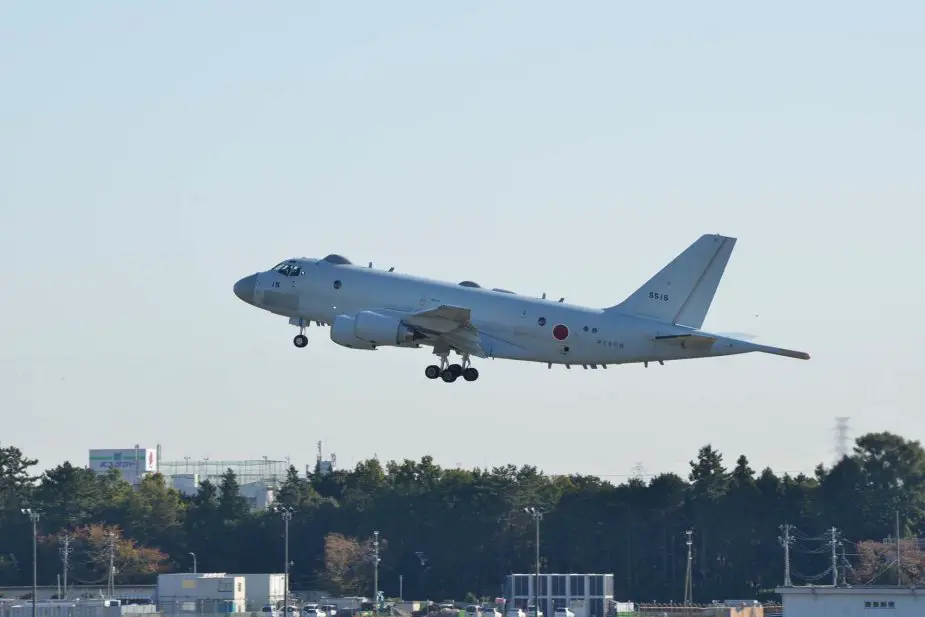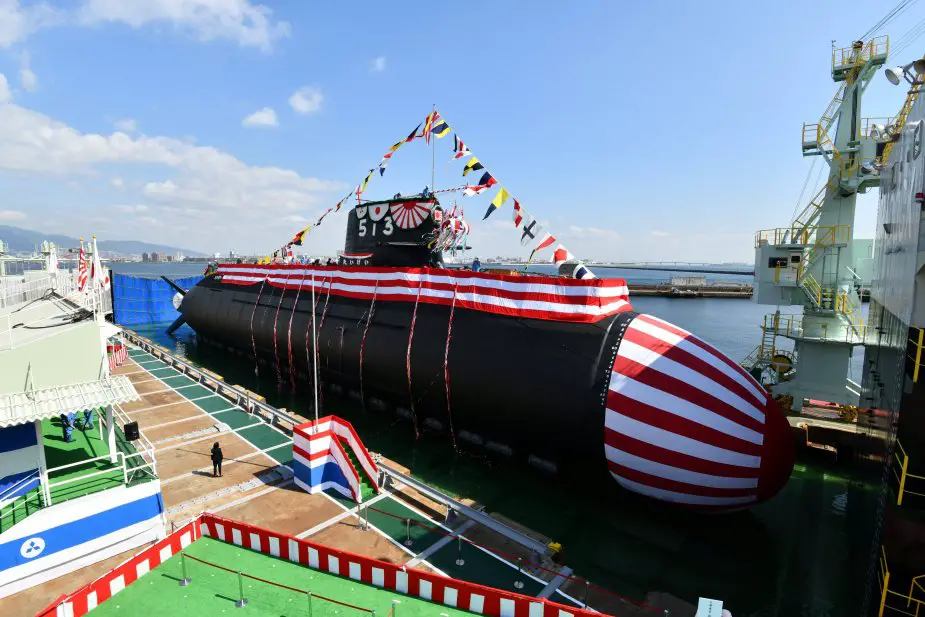The Japanese Ministry of Defense published the Defense Programs and Budget of 2022. The MOD/SDF will greatly bolster its defense capabilities to counter the threat of its enemies.
Follow Navy Recognition on Google News at this link
 Japanese Kawasaki P-1 maritime patrol aircraft (Picture source: Japanese MoD)
Japanese Kawasaki P-1 maritime patrol aircraft (Picture source: Japanese MoD)
Given a situation in which the security environment around Japan is growing increasingly severe at an unprecedented pace, with neighboring countries strengthening their military capabilities through substantial increases in defense spending, Japan will significantly enhance the necessary defense capabilities in order to respond to these changes, working to build a “Multi-Domain Defense Force” equipped with capabilities in space, cyberspace, and the electromagnetic spectrum, capabilities in the maritime and air domains, comprehensive air, and missile defense capabilities to respond to diverse airborne threats, standoff defense capability, maneuvering and deployment capability, and secure ammunition and ensure maintenance of equipment.
In addition, in order to security technological superiority in the defense field, Japan will enhance research and development into potential game-changing technologies and strengthen the defense industrial base.
Moreover, Japan will reinforce the human resource base by securing sufficient high-quality SDF personnel and improving their treatment, etc., as well as strengthen the Japan-U.S. Alliance and security cooperation with other countries.
Capabilities in Maritime and Air Domains
Japan procured fixed-wing patrol aircraft (P-1s) as the successor to the current P-3 C fixed-wing aircraft. The Kawasaki P-1 (previously P-X, XP-1) is a Japanese maritime patrol aircraft developed and manufactured by Kawasaki Aerospace Company.
The P-1 is a purpose-built maritime aircraft with no civil counterpart and was designed from the onset for the role. It has the distinction of being the first operational aircraft in the world to make use of a fly-by-optics control system.
The MoD also procured one MSDF minesweeping and transport helicopter (MCH-101), which is a medium-lift helicopter in military and civil use developed by a joint venture between Westland Helicopters in the United Kingdom and Agusta in Italy.
The Japanese Budget also includes the construction of one Taigei-class submarine, which is a new class of attack submarines developed for the Japan Maritime Self-Defense Force. It is the successor to the Sōryū class.
The Taigei class is equipped with a large amount of lithium-ion batteries, as is the case with the eleventh and twelfth submarines of the Sōryū class (Ōryū and Tōryū), making it possible for the submersible to travel longer and at higher speeds underwater than conventional diesel-electric submarines.
 Taigei-class submarine (Picture source: 海上自衛隊)
Taigei-class submarine (Picture source: 海上自衛隊)
Enhancement and Increase of Shooters and Guided Missiles
The acquisition of Standard Missile-6 (SM-6), to be mounted on Aegis-equipped destroyers (Maya-class destroyers) is a part of the new budget, according to the official sources.
The RIM-174 Standard Extended Range Active Missile (ERAM), or Standard Missile 6 (SM-6) is a missile in current production for the United States Navy. It was designed for extended range anti-air warfare (ER-AAW) purposes providing capability against fixed and rotary-wing aircraft, unmanned aerial vehicles, anti-ship cruise missiles in flight, both over sea and land and terminal ballistic missile defense. It can also be used as a high-speed anti-ship missile.



